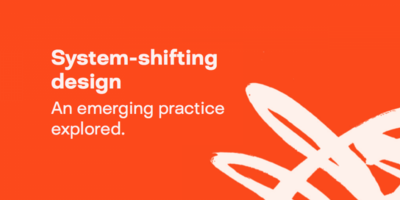Lancaster University

Design coaching helped Lancaster University to commercially develop an idea that could transform the landscape of toxicology testing, including finding a sustainable replacement for animal testing.
In December 2013, Lancaster University filed a patent for a 3D cell culture system after its researchers had an idea for a new and improved way of testing chemical-induced effects in real-time on specific cells and over long-term exposure.
The system replicates the environment of living tissues better than traditional methods where essential cellular functions that are present in tissues are missed by cells cultured in petri dishes for research purposes. This limits the potential to accurately predict the cellular responses of real organisms.
The university’s researchers’ idea was a cell culture device that can be used to grow biological cells – including human cells – in a 3D formation that better mimics a real-world environment. This involves growing a 3D mass of cells around a permeable, nutrient-supplying tube to examine the cell mass for changes in the amount of specific molecules.
The hope is that the university’s device will have widespread use in laboratories around the world, transform toxicology testing and also help replace animal testing. A key market would be the pharmaceutical drug evaluation sector.
We knew we would need to address branding at some point, but we lacked the marketing experience and expertise to know when or how.
Dr Valon Llabjani, ReVivoCell
Lancaster University set up a spin-out company called Novabiomatrix to commercially develop the idea which subsequently secured consultancy support from a university project that supports new product development.
Eager to maximise its ability to attract funding from external investors, Novabiomatrix – now known as ReVivoCell – successfully applied to be part of Design Council’s research commercialisation programme. “We were looking for broader help to effectively communicate our message to potential investors,” said Dr Valon Llabjani, co-founder and Chief Executive Officer of ReVivoCell. “We knew we would need to address branding at some point, but we lacked the marketing experience and expertise to know when or how.”
What We Did
Through the programme, the team of researchers began working with Design Associate David Raffo. David reviewed the project and discussed the benefits of a design-led approach to commercialisation involving iterative, user-led design. He then recommended two courses of action to the team.
“[Novabiomatrix] needed to build a proposition to funders to cover the cost of developing the product. To do this effectively, they needed to take all the science and convert it into a form of communication that would make sense to a non-scientific business person,” he explained.
They needed to take all the science and convert it into a form of communication that would make sense to a non-scientific business person
David Raffo, Design Council
“They would also need a brand to reassure any prospective client that they were dealing with a business, and brand components such as packaging that would show how the 3D cell culture system might look, the kind of products it would include, and how it would be sold.”
With Raffo’s help, Huddersfield-based design agency The Engine Room was chosen to create Novabiomatrix’s brand.
“The product idea was great, but the team had no prototype, just a PowerPoint presentation at the time. What we needed to do was create differentiation to put life into their proposition as they took it out to sell to other academics and potential partners,” said The Engine Room’s Creative Director, Mark Edwards.
“They also needed a brand proposition that could grow with them and accommodate other products as and when they developed them. So we created a brand architecture with a toolkit of design components they could use across a range of materials including stationery and a website. The key was getting the foundation right.”
Results
Working with our Design Associate showed us the value that working with external designers can bring.
Dr Valon Llabjani, ReVivoCell
Following completion of the brand design work, Novabiomatrix worked with The Engine Room to apply the work it had done to the company’s new name, ‘ReVivoCell’. Soon after, ReVivoCell secured additional funding to develop its product idea further. The branding also helped the team open discussions with a number of potential commercial partners.
“We knew branding would be an important part of promoting our idea and that we would need to do it at some point,” said Llabjani. “What working with our Design Associate showed us was the benefits of addressing this earlier in the development process than we might otherwise have done, and the value that working with external designers can bring.”
Subscribe to our newsletter
Want to keep up with the latest from the Design Council?

